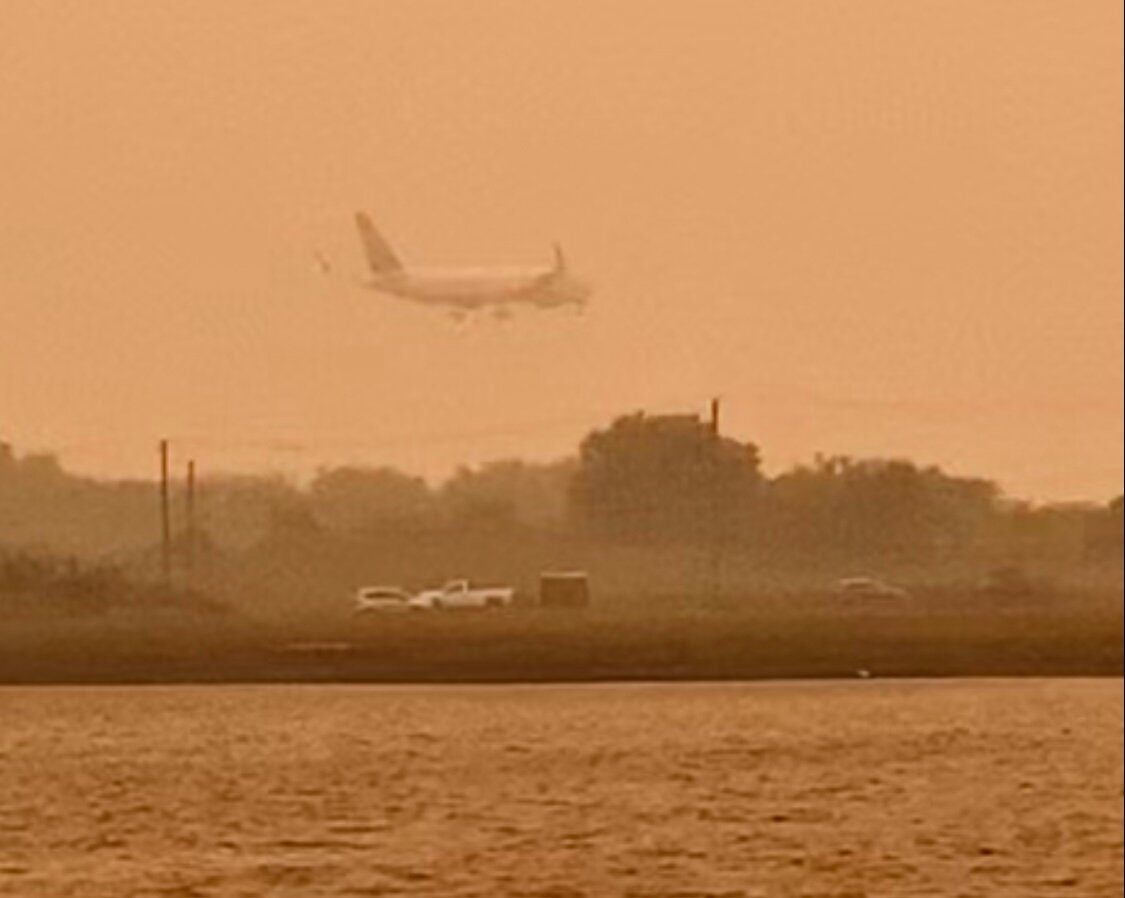Smoke of wildfires raises health concerns
Air quality advisories were issued five days in a row amid worst pollution in memory
The thick yellow haze that descended on Long Island last week was more than a natural sepia-toned filter — the unnervingly post-apocalyptic scene brought with it some serious health concerns.
The blanket of smoke that blocked out the sun on June 7 was a result of a sooner-than-typical start to what is projected to be Canada’s worst wildfire season ever. The resulting smoke plume was like nothing New York state had ever seen, according to officials from the Department of Environmental Conservation.
“It’s certainly the worst in memory, by far,” DEC Commissioner Basil Seggos said of the air quality at a June 7 news conference. “It certainly is unprecedented.”
Long Island, like most of New York, received health advisories regarding degraded air quality every day from June 5 to 9. The advisories came as no shock to residents who were experiencing a yellow, smoke-scented world.
It “smelled like a campfire I couldn’t escape from,” one Facebook user commented to the Lynbrook Herald. “Amber skies, and fire pit smell everywhere,” wrote another.
The Air Quality Index, created by the Environmental Protection Agency, measures the level of pollutants in the air and the resulting health concern. Sensitive groups — children, seniors, pregnant women, or those with heart or lung conditions — should be mindful of AQI ratings of over 100, and everyone, regardless of health, should be careful when ratings rise above 150. Places in Nassau County saw ratings of over 300 during the June 7 peak of bad air. New York City had a rating of 484, briefly making it the most polluted city on earth.
“If you’ve been looking out the window the last couple of days, you can see the effects of the Canadian wildfires,” Dr. James McDonald, acting commissioner of the state Department of Health, said at Wednesday’s news conference. “If you’re out walking and all of a sudden you’re coughing, you’re feeling short of breath, that’s a signal. When your body speaks to you, you want to listen to your body.”
The DEC and other environmental and health organizations urged people to limit time outdoors. Gov. Kathy Hochul issued a statement urging all schools to suspend outdoor activities, and the Public High School Athletic Association canceled a number of sports events on Long Island.
“When we’re talking particularly about wildfire smoke, we know that contains fine particulate matter, which we know can enter the lungs,” Trevor Summerfield, the director of advocacy in New York for the American Lung Association, said. “These particulate matters could be potentially toxic as well. We don’t want anything in the lungs that’s coming from burning. We know that’s just not healthy for you.”
Short-term exposure to such pollutants can cause coughing, sneezing, shortness of breath, a runny nose, and irritation of the eyes, nose or throat, according to the DEC. Significant long-term exposure can lead to more serious complications, such as asthma. The DEC and the American Lung Association urged people to stay indoors as much as possible, and to wear an N95 mask if a trip outside was unavoidable.
Last week’s conditions were something of a perfect storm of atmospheric anomalies. According to Nelson Vas, the warning coordination meteorologist for the National Weather Service, the intensity of the smoke Long Island experienced was exacerbated by a poorly timed low-pressure system that funneled smoke from extreme fires in Quebec south to Long Island and the metropolitan area. The stifling smog, Vas said, was so intense that Long Island temperatures dropped several degrees.
“Some of the wildfires have spread a bit,” Vas said. “That and the wind direction have all come together to really increase the concentrations down here.”
The severity of the fires is due largely to an extended dry season in Canada. Vas explained that New York has not experienced such a dry spring, making a similar wildfire season here unlikely.
Nonetheless, even more concerning is the possibility that this is only the beginning of a pattern that could continue to threaten the Northeast with smoke. Climate change is a direct cause of the increased intensity and longevity of wildfires, according to the Environmental Protection Agency. “We’re really concerned about climate change,” Summerfield said. “We know that climate change has an impact on our lung health because of incidences like this. I think it’s just getting worse.”
He added, “In New York, we’re blessed to have great air quality, for the most part. And when we’re used to that, and then you get (June 7), which is like the worst you could possibly see, it’s a pretty stark wakeup call.”
The stifling smog has given way to normal atmospheric conditions, but if the experts are right, and Long Island can potentially expect future run-ins with wildfire smoke, a hazy yellow world may be added to the growing list of “unprecedented events” people should get used to.







